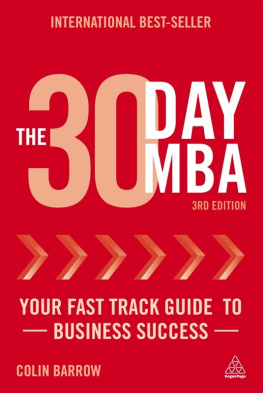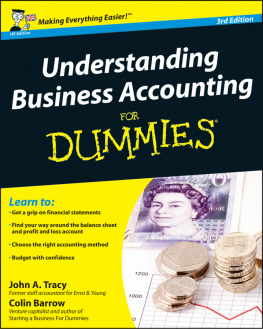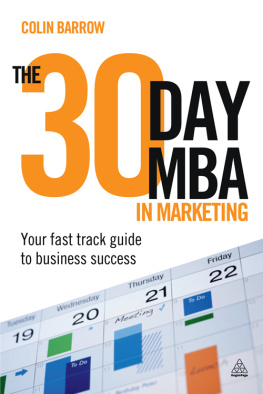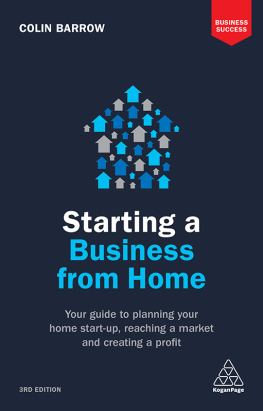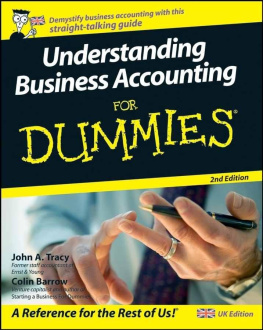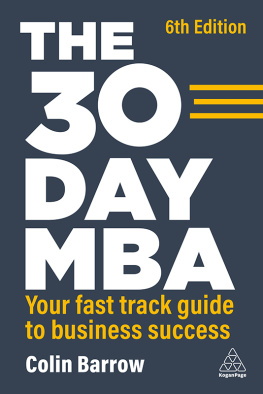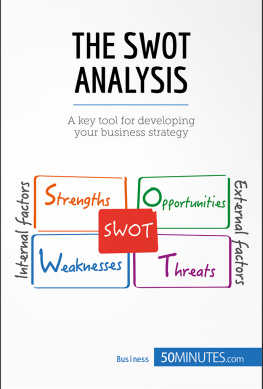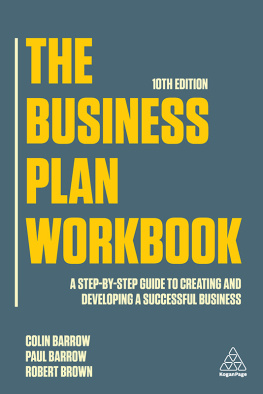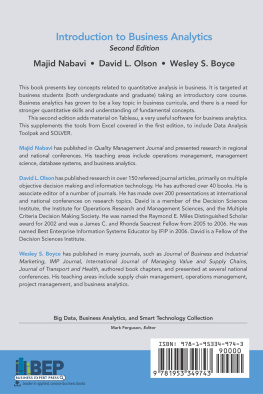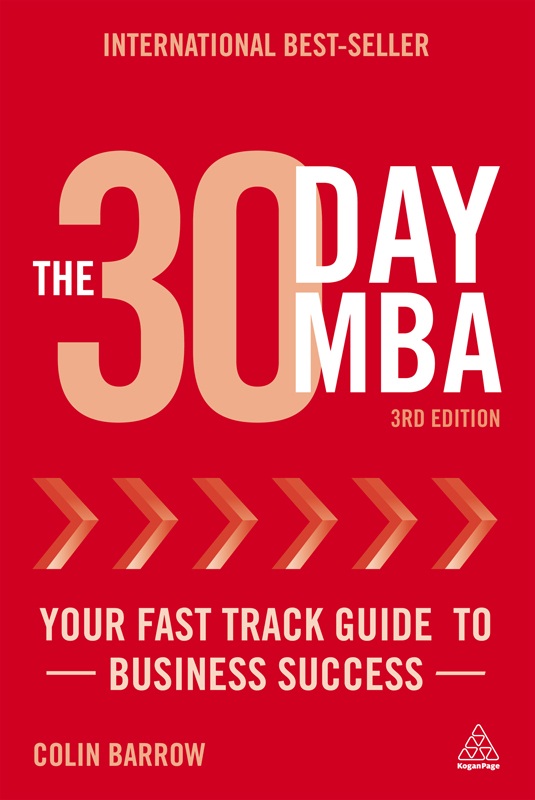For many of the topics in the book there are direct links to the free teaching resources of the worlds best business schools.
There are also links to hundreds of hours of free video lectures given by other distinguished Business School professors, from top schools including Cranfield, Wharton, Chicago, Harvard and CEIBS (China Europe International Business School).
You can download Duke Universitys top ranking Fuqua School of Businesss lecture material on forecasting; a vital aid to anyone preparing sales projections.
Link into Cranfields School of Managements Research Paper Series and see the latest insights in global supply chain logistics, or watch Harvards Professor Michael Porter a leading world proponent of international business strategy methodology outline his ideas.
You can find a list of all these online resources and more at www.koganpage.com/30DayMBA and interspersed within the chapters.

Note on the Ebook Edition For an optimal reading experience, please view large
tables and figures in landscape mode. |
This ebook published in 2013 by
Kogan Page Limited
120 Pentonville Road
London N1 9JN
UK
www.koganpage.com
Colin Barrow, 2009, 2011, 2013
E-ISBN 978 0 7494 6991 7
CONTENTS
Cost model 1: showing fixed costs |
Variation on cost model 1: showing a step up in fixed costs |
Cost model 2: showing behaviour of variable costs as volume changes |
Cost model showing total costs and fixed costs |
Cost model showing break-even point |
Break-even chart for special deals |
Funding appetite |
Risk and leverage/gearing |
Cobra Beers financing strategy |
Market share UK supermarkets 201112 |
Example SWOT chart for a hypothetical Cobra Beer competitor |
Perceptual mapping |
The product life cycle |
Richness vs reach |
The mathematics of internet networks |
A framework for understanding organizational behaviour |
Basic hierarchical organization chart |
Line and staff organization chart |
Functional organization chart |
Matrix organization chart |
Strategic business unit organization chart |
Groups are not the same as teams |
The management grid |
The balanced scorecard |
The leadership continuum Tannebaum, Schmidt |
Training needs analysis worksheet |
The five phases of growth |
Force field analysis template |
The demand curve |
Textbook economic cycle |
Stakeholder mapping |
Stakeholder relevance matrix |
Stakeholder rights and expectations grid |
Maternity clothes value chain |
Gantt chart showing weekly tasks for a website design project |
Critical path method applied |
Operating channels |
Example decision tree |
Normal distribution curve (bell) showing standard deviation |
Scatter diagram example |
Scatter diagram the line of best fit |
The experience curve |
Five Forces theory of industry analysis (after Porter) |
Ansoffs Growth Matrix |
The Boston Matrix |
The GEMcKinsey directional policy matrix |
The long-run return pyramid |
PESTEL analysis framework |
The Top 50 World Ranked Business Schools (FT Global MBA Rankings) 2012 |
Example of the changing worth of an asset |
Example of a badly matched profit and loss account |
An example of a double-entry ledger |
High Note six-month cash-flow forecast |
Un-audited condensed cash-flow statement for XYZ plc (for the 6 months ended 30 June 2011) |
Income statement/profit and loss account for High Note for the six months AprSept |
High Note extended profit and loss account |
High Note balance sheet at 30 September |
High Note balance sheet US style |
A package of accounts |
Factors that affect profit performance |
Difficult comparisons |
Calculating a margin of safety |
The effect of leverage/gearing on shareholders returns |
The payback method |
Using discounted cash flow (DCF) |
The fixed budget ($//000s) |
The flexed budget ($//000s) |
Example showing product features, benefits and proofs |
The product/service adoption cycle |
Measuring advertising effectiveness |
Selected country scores for Hofstedes culture dimensions |
Business starter attribute check |
The selling prices of companies products |
Googles sales and profit performance 2007Q3 2010 |
Exporters and importers of merchandise (agricultural products, food, fuels, iron, steel, chemicals, office and telecoms equipment, automotive products, textiles, clothing etc) |
Executive summary history and projections |
- The real value of an MBA
- What an MBA knows
- Why YOU need that knowledge too
- Where to get MBA knowledge from the best schools (not just from one)
- How to use this book
T he value of MBA knowledge has been put to the test in the years following the world credit crunch. When Lehman Brothers, a bank that had survived the great depression of 1929, collapsed, the queues of their employees exiting their offices worldwide clutching cardboard boxes of their personal effects included the alumni of almost every top business school. The 2012 edition of MBA Application Trends, produced by the Graduate Management Admissions Council (GMAC), the leading source of research and information about quality graduate management education, reveals a reassuring confidence in the value of the MBA. The 13th since GMAC introduced the annual survey in 2000, it included more participants than ever before: a record-breaking 744 programmes were represented in the survey from 359 business schools. Two-thirds (66 per cent) of participating schools were located in the United States; however, a record percentage of programmes (34 per cent) from elsewhere in the world are represented in their findings.
The percentage of MBA programmes that experienced increased application volume in 2012 ranges from 41 per cent to 66 per cent, with two year full-time programmes represented by the lower figure and online/distance learning MBAs the higher. This growth in demand looks set to continue; based on applications for 201213 some 51 per cent of business schools noted increased application volumes.

